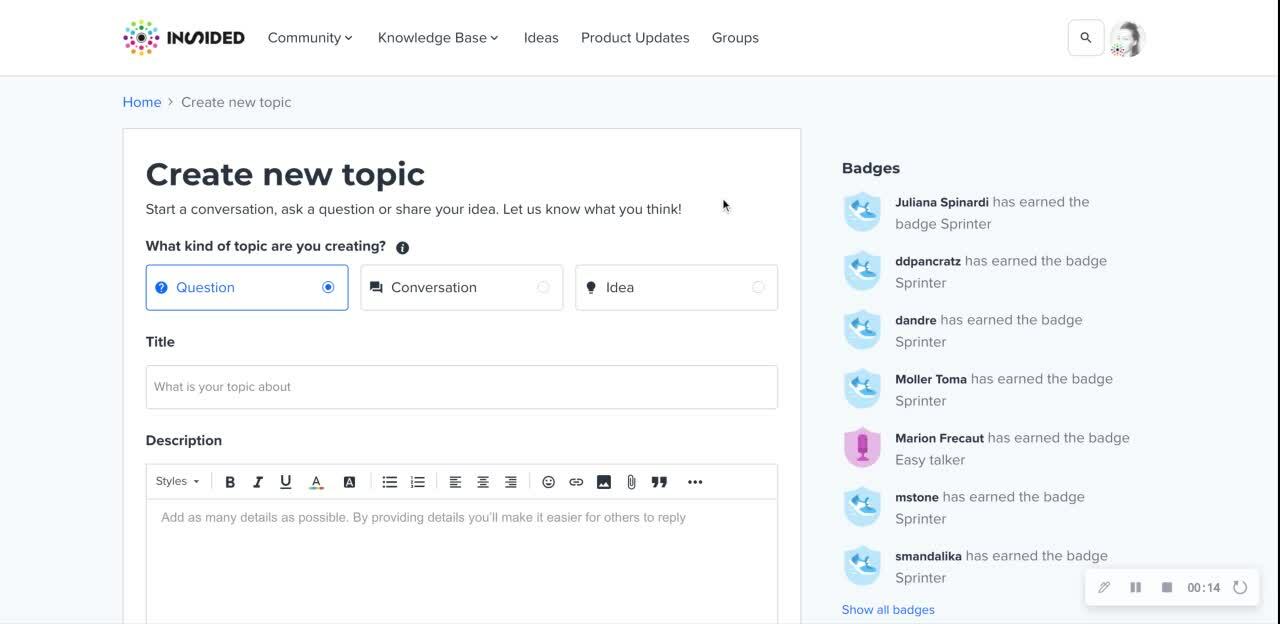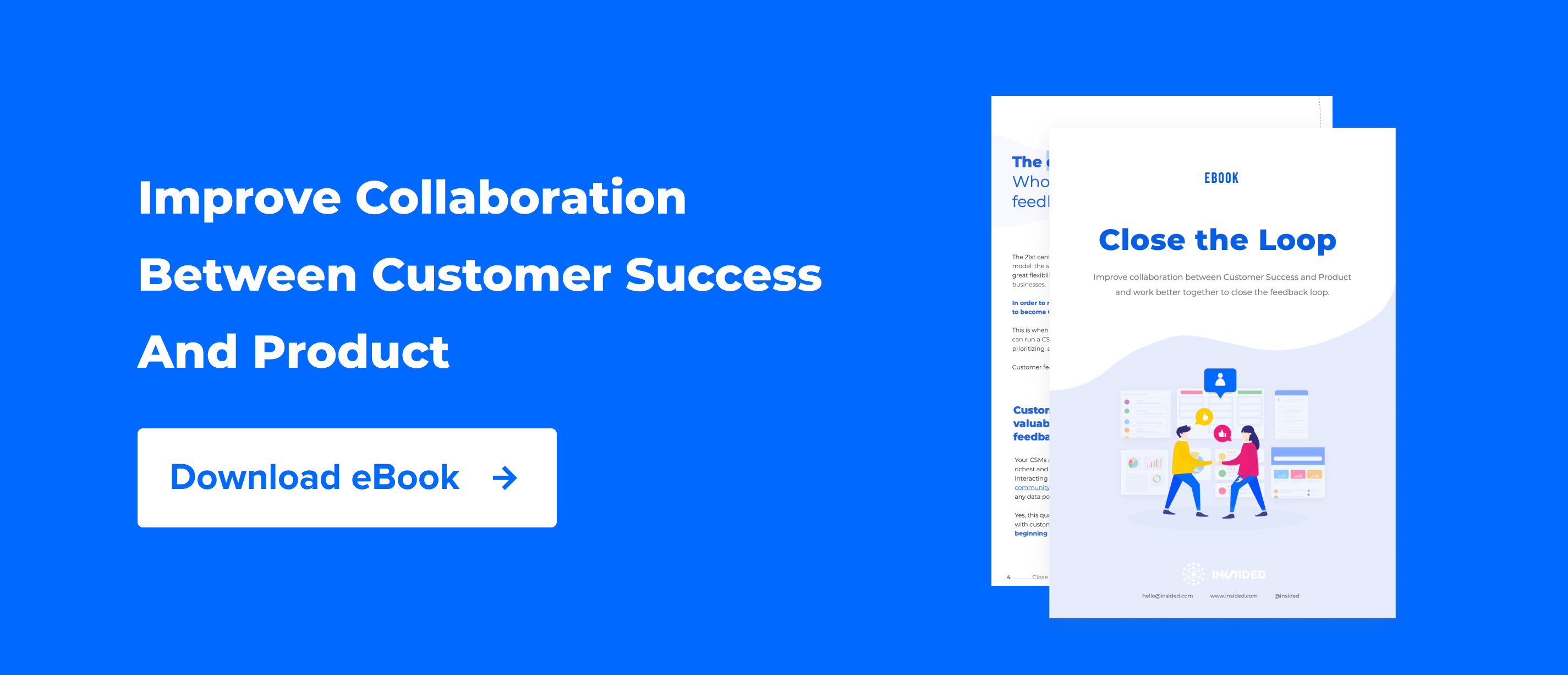So far in our Close the Loop series, we’ve talked about how Customer Success and Product can work together to close the loop and how inSided’s own customer feedback and ideation process has evolved over the years.
At this point, it shouldn’t be news to anyone that successful customers can grow a business faster than any sales or marketing initiatives. But for customer feedback to serve as the foundation for that growth, you need to have a structured way of managing and prioritizing customer feedback in place.
That’s why this week, we’re going to look at how you can manage, structure, and prioritize customer feedback using our very own Product Feedback and Ideation solution.
Let’s start with the collection part.
Collecting customer feedback
Establishing a feedback loop starts with, well, just that – feedback. There are plenty of channels for collecting feedback, but all too often, this is where the problems begin. While you can collect customer feedback across numerous channels, tools, and teams – if all that feedback isn’t hosted in one centralized place, it can be difficult to put all the pieces together.
What you want to achieve isn’t rocket science, you want to:
- Make it easy for customers to provide feedback.
- Make it easy for Customer Success to communicate customer feedback internally.
- Make it easy for Product to make sense of customer feedback.
- Make it easy for Product to include customers in the process as you prioritize and test features.
- Make it easy for Product, Customer Success and customers to collaborate throughout the process.
Our Customer Success team encourages our customers to provide feedback and submit feature requests in the ideation section of our community.
Here’s what that looks like:
By having a designated place for customers to leave feedback and share their ideas, we can rest assured that nothing falls through the cracks and we’re always collecting feedback, whether prompted or unprompted.
Structuring customer feedback
So you’re sitting on all this feedback. Then what?
The first thing you’ll want to do is get it structured, organized, and categorized so that you can get a complete overview of what your customers need and how and where that fits into your product roadmap and vision.
Using our Product Feedback and Ideation tool, we can manage our customer feedback and determine what part of our product requires the most attention as we:
- Categorize customer ideas based on product area.
- Review customer engagement and get a wider context by drilling into replies and comments from other customers.
- Use integrations to enrich context, e.g. use Salesforce and Gainsight to filter based on engagement and ARR.
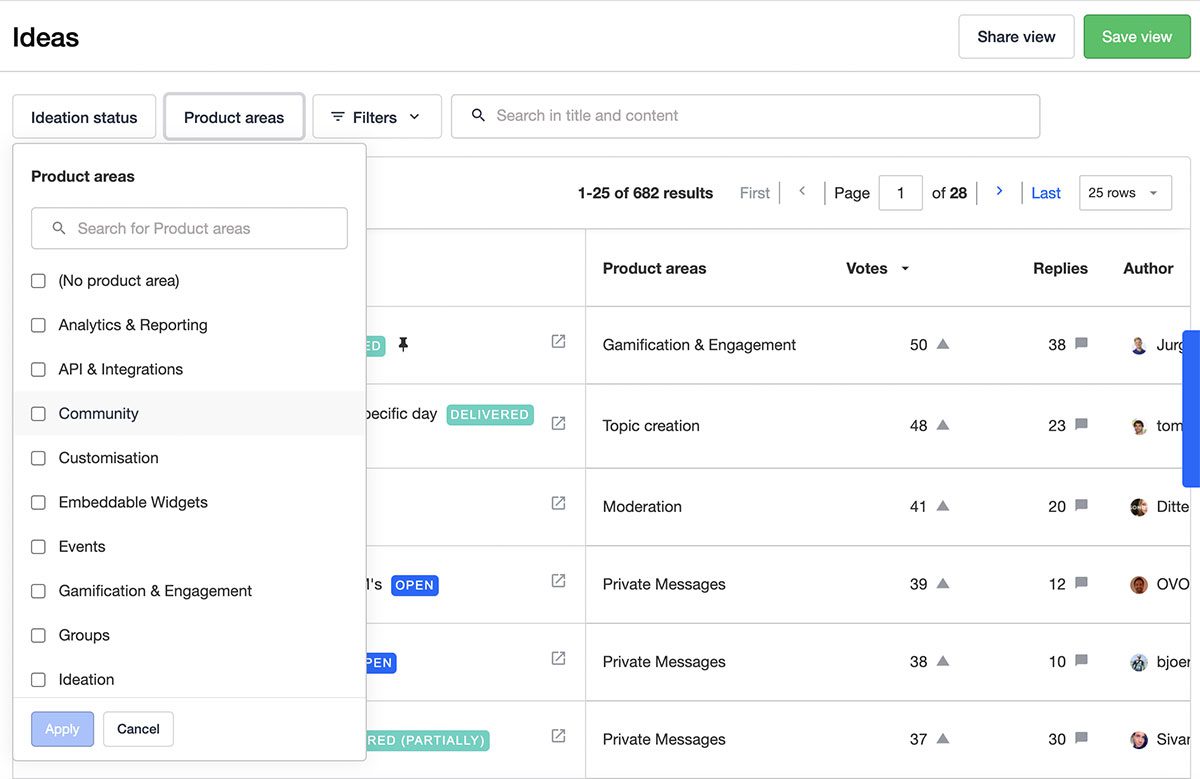
Prioritizing customer feedback
Back in 2019, we started looking at customer ideas as a primary source of opportunities for our product roadmap. But when you’re prioritizing feedback and ideas, your job is not just about making sure you choose the ideas and requests that make sense for your roadmap – half of the job is about managing customer expectations.
When you choose what to prioritize and why you have to be transparent with your customers – always keeping the lines of communication open.
- Determine the importance of an idea or feature request by looking at overall customer engagement, such as the number of upvotes and replies.
- Assess if, how, and when an idea fits into your product roadmap based on the context provided by your customers.
- Ask your customers directly for more information to help better understand the impact and value of a specific idea.

- Be transparent about why a request won’t be prioritized and provide alternative solutions where possible.
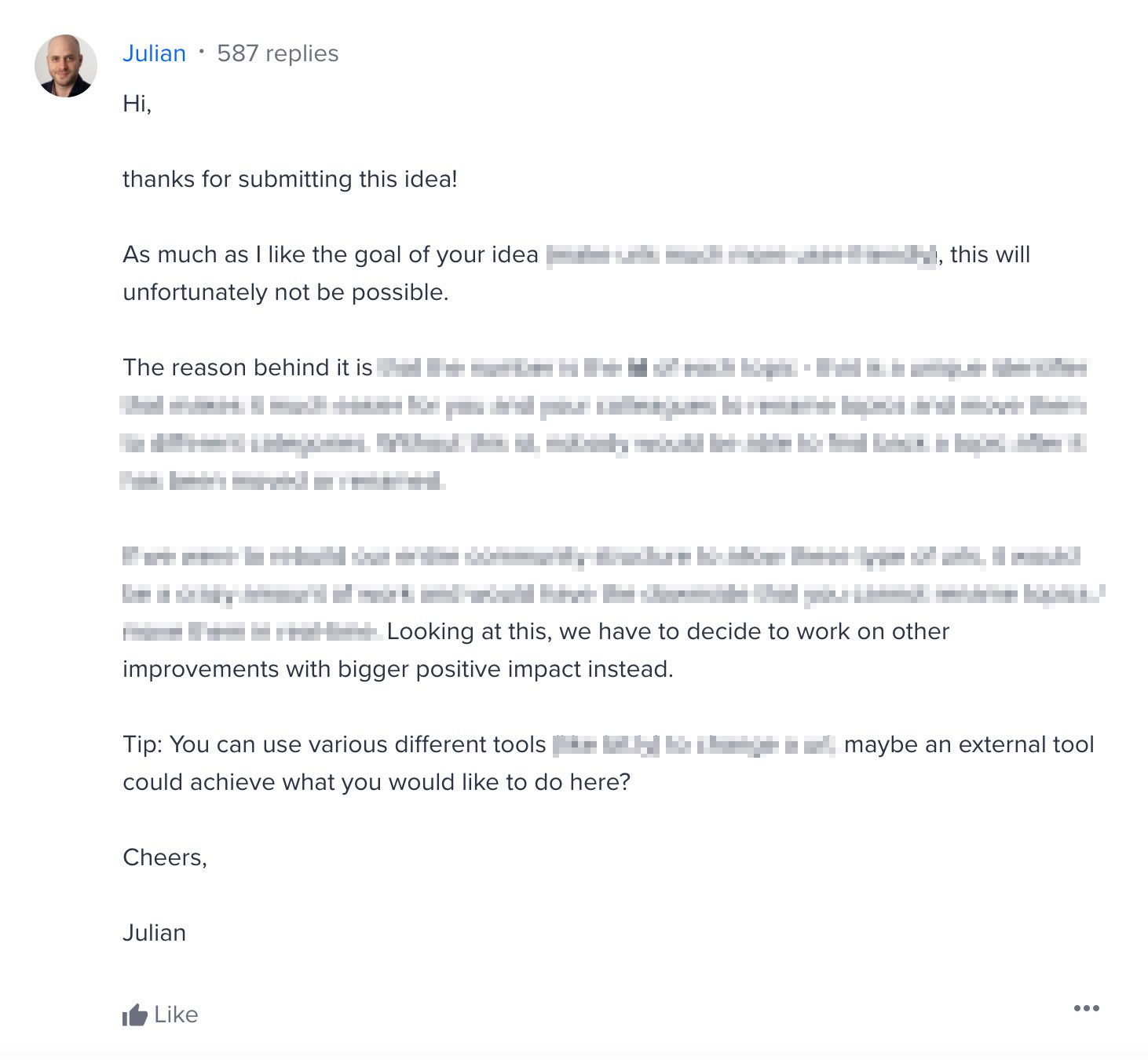
Today, we create OKRs around delivering customer votes for particular areas of the product. This is something that not only motivates our Product Engineering teams, but it has also strengthened our relationship with Customer Success as we work together to deliver maximum value to our customers.
The result? In 2020 alone, we delivered 50 ideas from the community.
Keeping customers in the loop
The last step when it comes to managing customer feedback is about closing the loop on the feedback. In other words, letting your customers know you have delivered an idea or feature request.
Use your customer community to:
- Share your product roadmap and explain exactly where feedback and ideas fit into the roadmap.
- Provide status updates on submitted feedback and ideas, whether they’re being worked on, parked, or added to your backlog.
- Communicate product updates to your customers, by posting product updates, sharing ideation reviews, and linking back to where an idea came from.
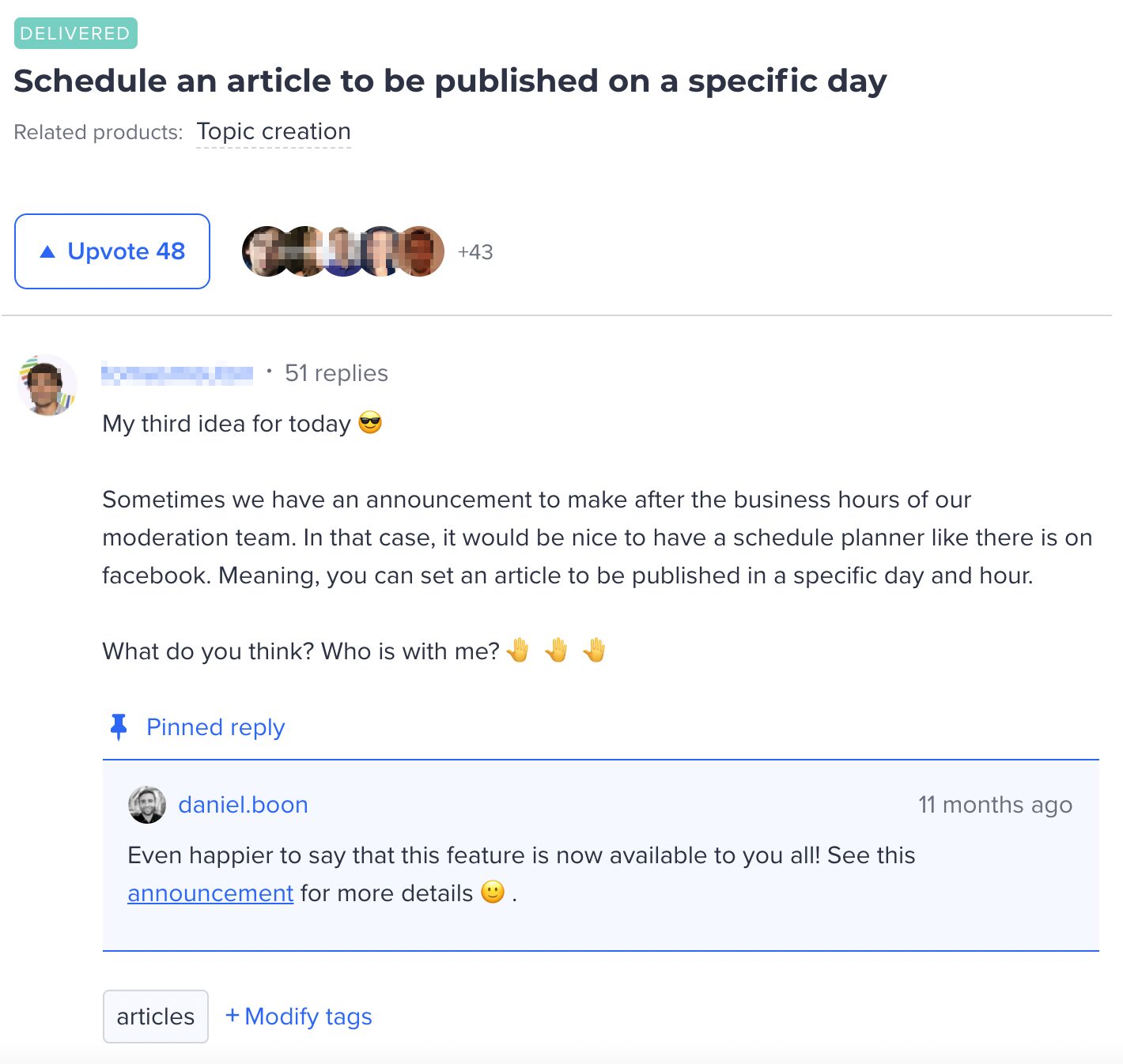
To date, we’ve reached over 1000 votes delivered (40% of all cumulative votes delivered). We share Quarterly Ideation Reviews with our inSpired community and they’re bursting with ideas.
6 reasons why a customer community is the best channel to collect customer feedback
Where better to collect customer feedback than in your own backyard? Leverage your customer community to access invaluable insights and feedback along with user-generated ideas and requests.
Here are six reasons customer communities are the best channel to collect customer feedback:
- Facilitate unprompted feedback – Prompted feedback, i.e when you ask customers to give feedback by filling out a survey about a specific feature or experience, and – while useful – that type of feedback tends to be less powerful than unprompted feedback. Why? Because it’s often the issues you’re not even aware of that you need to hear the most. That’s why allowing customers to submit feedback and ideas freely often has the biggest impact.
- Avoid bias – Asking for feedback is difficult. Often we create bias because we’re not aware of our own assumptions and personal opinions. When feedback is generated organically, you don’t run the risk of creating a bias in your customers.
- Prevent loss of context – When the feedback is immediately available to Customer Success and Product (and the rest of the company), you don’t run the risk of feedback getting lost in translation as it’s shared directly between departments and individuals. The feedback always comes straight from the horse’s mouth.
- Offer full transparency – With a designated place for customer feedback open and available to your entire customer base, you communicate that you take customer feedback seriously and include the voice of the customer in your roadmap, progress, and vision.
- Create a self-informed environment – Customers will inform each other of the status of features, for example, if something’s already been requested or delivered. This way, they’re upholding the information ecosystem among themselves, often without the need for Customer Success or Product to step in.
- Generate peer-to-peer discussions – Ideas breed more ideas. And in a customer community, discussions come easily. Those discussions help judge how important an idea is and how invested users are in certain features.
This conversation about manually granting badges received 184 replies when it was first posted in our Inspired community. (Note that only Inspired users will be able to view this page.)

Final words
A customer community doesn’t just provide a centralized place for collecting customer feedback. It also provides a central hub for collaboration, communication, and perhaps most importantly – transparency – between Customer Success, Product, and your customers.
Collecting customer feedback, getting unbiased insights into customer needs, and shaping your product accordingly is what paves the way for sustainable growth and enhances the customer experience for the long term, no matter where you’re at in your journey.
Community-led SaaS companies are the future
Want to discover how a customer community can help increase collaboration between your Customer Success and Product teams?
Book a meeting to learn more about how a customer community can improve product adoption, drive customer engagement, and increase retention.
Learn More
Looking create a single destination for your customers to connect, share best practices, provide feedback, and build a stronger relationship with your product? Schedule a demo to learn more.


